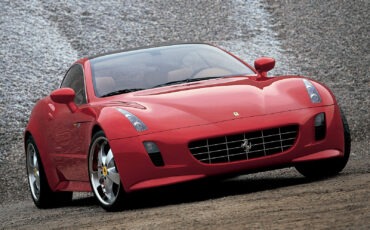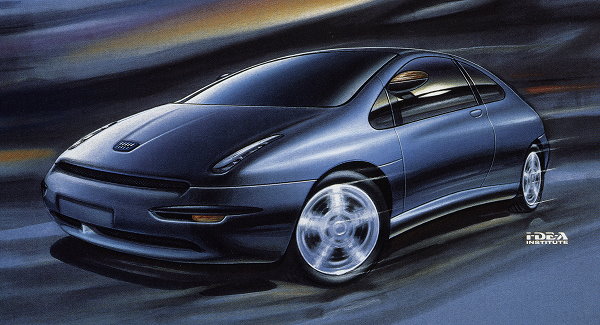
In 1994 at the Turin Auto Salon, following the initiative taken with the Fiat Cinquecento, the Turin-based automaker decided to offer Italy’s most prestigious coachbuilders and design houses the opportunity to reinterpret the newly launched Fiat Punto in their own unique way. This initiative aimed to explore the stylistic and technical potential of the successful compact car, highlighting the versatility of its base design.
Eight official prototypes were presented, created by some of the most renowned names in Italian automotive design: Bertone, Boneschi, Coggiola, Italdesign, Maggiora, Pininfarina, and Zagato. Each of these ateliers brought its own vision to the table, experimenting with new shapes, materials, and technical solutions to redefine the concept of a city car and a compact vehicle.
These Fiat Punto Concept Cars stand as a significant testament to the creativity and ingenuity of Italian automotive design in the 1990s, offering a glimpse into what the future of automobiles could hold.
Here are the eight unique interpretations of the Fiat Punto created for this special occasion.
Bertone Punto Racer
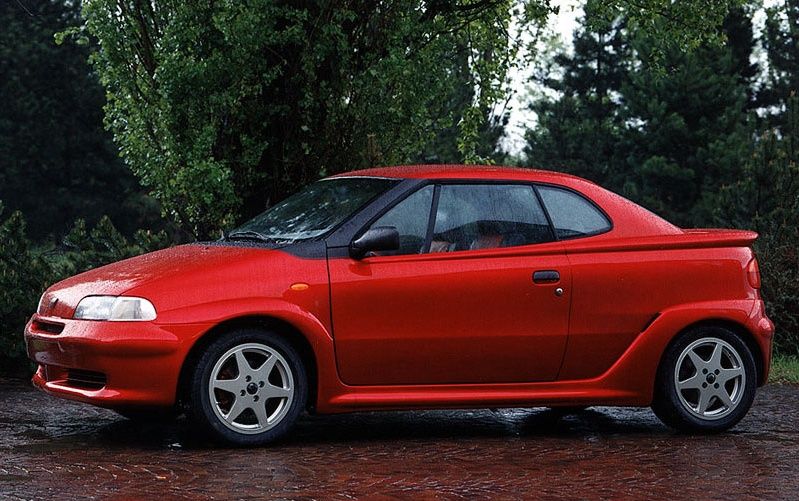
The Fiat Punto Racer, envisioned by Luciano D’Ambrosio and brought to life by Bertone, was a refined coupé interpretation of the Punto, created as part of a broader design initiative that invited Italy’s leading coachbuilders to reimagine Fiat’s latest compact model. Bertone’s approach drew inspiration from a successful 1960s Fiat marketing strategy, which introduced both an open-top and a coupé variant alongside the standard production model, offering customers a blend of practicality and performance-oriented styling.
Based on the Punto Cabrio chassis, the Racer retained its fundamental structure while introducing strategic refinements that subtly reinforced its sporting identity. A key element of its design was the panelled roof, replacing the Cabrio’s soft top, giving the car a more purposeful, aerodynamic profile. The Racer name itself was a deliberate nod to Bertone’s heritage, echoing the Fiat 850 Spider Racer from 1966, a model synonymous with elegance and agility.
By preserving the essence of the Punto while enhancing its dynamism and exclusivity, the Punto Racer demonstrated a measured yet impactful approach to design evolution. It was one of several distinctive concepts presented in this initiative, each offering a unique perspective on Fiat’s versatile city car.
Boneschi Punto Doblone
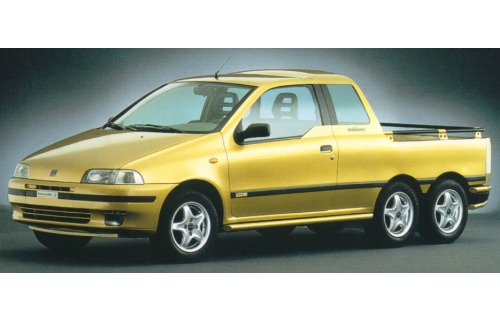
The Fiat Doblone is a remarkable six-wheeled pick-up truck, an inventive creation by Boneschi that showcases a unique approach to compact utility vehicles. By incorporating a second rear axle, taken from a standard Fiat Punto, the Doblone achieves a significant increase in load-carrying capacity, making it highly adaptable for various professional and commercial applications.
One of its most distinctive design features is the rear-mounted fuel tank, which allows for the installation of two additional rear seats positioned facing each other. This clever layout optimizes space while maintaining the vehicle’s functional versatility.
Beyond the pick-up variant, Boneschi envisioned multiple configurations, including a van, a people-carrier, an ambulance, and other specialized adaptations, each designed to cater to different mobility and transport needs.
By merging engineering ingenuity with practical enhancements, the Fiat Doblone stood out as one of the most innovative interpretations of the Punto platform, reinforcing Boneschi’s reputation for pushing design boundaries while delivering functional, real-world solutions.
Coggiola Punto Surf
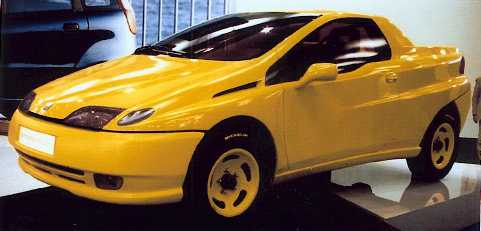
The Fiat Punto Surf, designed by Coggiola, was a bold and youthful reinterpretation of the Punto platform, envisioned as a sporty two-seater pick-up tailored for an active lifestyle. Unlike traditional light commercial vehicles, the Surf was designed with young, adventurous drivers in mind—particularly those drawn to beach outings and outdoor activities.
Blurring the lines between a car and a utility vehicle, the Surf retained the Fiat Punto’s chassis while incorporating a compact pick-up bed, blending practicality with a dynamic and playful aesthetic. Its exterior design set it apart, featuring smooth, flowing lines, tinted windows, and color-matched wheels, all contributing to a cohesive and eye-catching look.
One of its most distinctive styling elements was the unconventional placement of the turn signal lights, positioned on the car’s three-quarter angles rather than integrated with the headlights. This unique design choice enhanced the Surf’s futuristic appeal, reinforcing its identity as a lifestyle vehicle rather than a purely functional workhorse.
With its striking aesthetics and fresh approach, the Fiat Punto Surf stood out as one of the most playful and daring interpretations of the Punto, reflecting Coggiola’s innovative spirit in reimagining urban mobility for a younger audience.
I.DE.A Punto Lampo
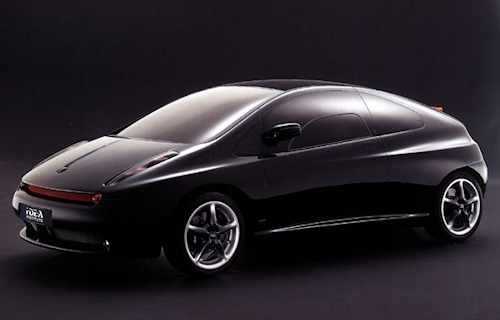
The Fiat Lampo, the result of collaboration between Fiat Group and the I.DE.A Institute, captured attention at the 1994 Turin Motor Show with its bold design approach. Tasked with reinterpreting the Fiat Punto, the Lampo merged coupé styling with the practicality of one-box design, featuring a cab-forward layout, advanced light clusters, and a rear with minimal overhang.
While clearly bearing Fiat’s family resemblance, the Lampo stood apart with its distinctive, sculpted body. The bonnet, adorned with intricate ribbing, immediately drew the eye, while the side profile transitioned seamlessly from a rounded greenhouse to the elongated doors, culminating in a rear accentuated by neon lighting. Measuring 3,895 mm long, 1,720 mm wide, and just 1,270 mm tall, the Lampo presented a low, athletic stance that exuded both agility and modernity.
Its most innovative feature was its pressed aluminum body, a departure from the traditional steel construction. This decision not only reduced weight but also enhanced structural integrity, demonstrating Fiat’s forward-thinking approach to lightweight engineering and material innovation.
With its combination of style, function, and cutting-edge design, the Fiat Lampo left a lasting impression, offering a bold vision for the future of compact car design.
Italdesign Punto Firepoint
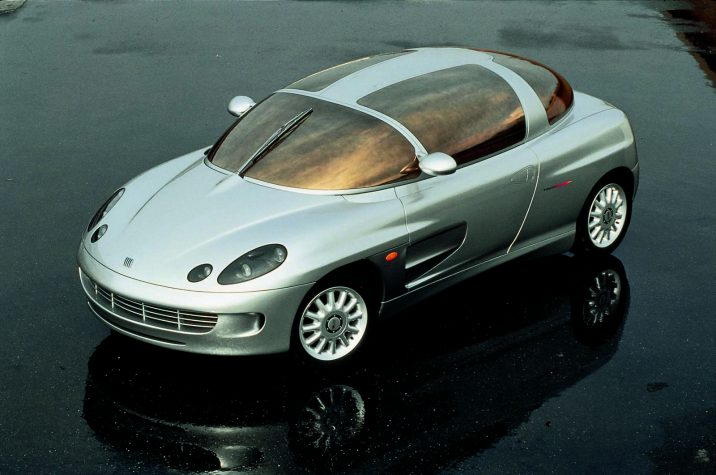
The Fiat Firepoint emerged as a captivating reinterpretation of the Fiat Punto, designed by Italdesign under the guidance of Fiat’s collaboration with ANFIA-affiliated coachbuilders. This 2+2 coupé seamlessly blended performance and distinctive design, embodying a vision that balanced modern engineering with bold aesthetics.
A standout feature of the Firepoint is its aerodynamic design, heavily influenced by aeronautics. The transparent, dome-shaped roof that spans across the vehicle recalls the cabins of fighter aircraft, infusing the car with a high-tech, futuristic aura. This choice not only elevates its appearance but also reflects the car’s commitment to cutting-edge engineering.
The backward-raked pillar and wraparound windscreen evoke a sense of nostalgia, nodding to the classic 1950s and 1960s automotive styling while still feeling modern and fresh. The gull-wing windows, inspired by the BMW Nazca M12, bring a touch of the future to the Firepoint’s design, adding a unique and dramatic flair to the entry experience.
Additionally, the Firepoint’s versatility is remarkable. The removable side and rear windows, coupled with the central rollbar and its connecting structure, allow the car to transform into a roadster, offering both a closed and open-air experience. This dual-purpose functionality captures the essence of Fiat’s forward-thinking spirit, making the Firepoint a true standout in automotive innovation.
Maggiora Punto Scia
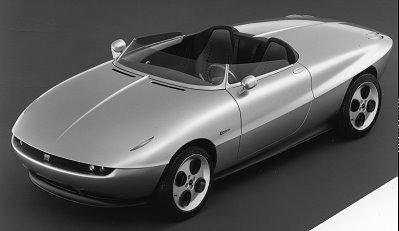
The Fiat Scia, a striking Barchetta concept, was the result of the creative minds of John Kinsey and Darren Caddes from Fiat’s Centro Stile. Pushing the boat-inspired design theme to its limits, the Scia was crafted to captivate and surprise with its bold, innovative styling elements, offering a glimpse into the future of Fiat’s sporty roadsters.
A standout feature of the Scia was its distinctive uprising mirrors, which added a maritime touch to the vehicle’s design, reinforcing its nautical inspiration. The three-dial dashboard, sleek and modern, presented a sophisticated yet functional interface that exemplified the Scia’s forward-thinking design approach. Another eye-catching element was its cut-off windows, a feature that would later appear in Stola’s Dedica, highlighting the lasting influence of the Scia’s concept on future design trends.
The Scia was a collaborative effort involving Ilcas and Maggiora, both renowned for their craftsmanship and experience in producing the Fiat Barchetta. The Scia not only demonstrated Fiat’s design innovation but also set the stage for future sporty, compact roadsters, blending distinctive styling with a dynamic vision for automotive design.
Pininfarina Spunto
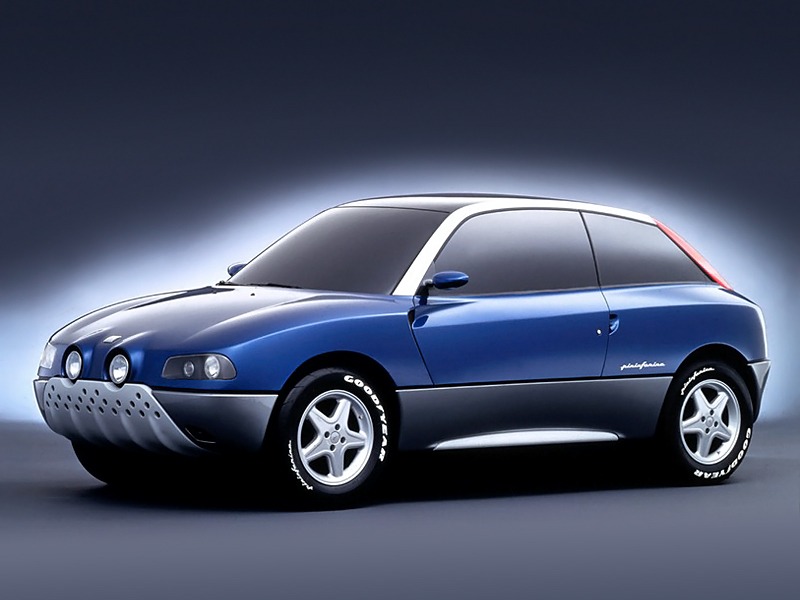
The Fiat Spunto by Pininfarina represents a bold exploration of the Fiat Punto’s potential, merging the practicality of a saloon with the sleek, dynamic lines of a coupé. Designed as a two-door hatchback for leisure use, the Spunto brings together off-road-inspired elements with a sporty coupé feel, catering to a younger, active demographic.
Notable features of the Spunto include increased ground clearance and lower body protection, giving it a rugged appeal without sacrificing style. This blend of utility and design innovation allows it to stand out as both functional and visually striking, with a hint of sporty aggressiveness typical of a coupé.
This two-box static model was crafted not just to be a vehicle, but to embody the concept of a car as a leisure companion. It was designed to appeal to those seeking a balance between practical transportation and a vehicle that serves as a tool for entertainment and adventure. Through the Spunto, Pininfarina redefined the notion of versatility in compact cars, combining style, performance, and a sense of fun for a younger generation of drivers.
Zagato Punto Sport Monomille

The Fiat Punto Sport Monomille was designed to revive the historic partnership between Zagato and Fiat Abarth, creating a 2-seat coupé focused on driving performance. Stripping away luxuries like the rear hatch, rear seats, and ventilation system, the car was built for minimalism, featuring bucket seats for the driver and passenger.
A key innovation was the movable wing, allowing the driver to adjust the car’s aerodynamics. This feature underscored the forward-thinking design of Zagato, influenced by the lightweight Fiat-Abarth coupés of the 1950s, known for their racing success.
The Sport Monomille also featured a revamped front end, aggressive wheel arches, and 17-inch wheels, giving it a dynamic, sporty appearance. The lowered roofline created a classic double hump shape, while the redesigned rear integrated the trunk, reducing weight and improving rigidity.
Incorporating aerodynamic features, like strategically placed side windows, the Fiat Punto Sport Monomille captured Zagato’s design spirit, blending classic style with innovative performance enhancements. This project followed the Fiat Cinquecento Z-Eco and Fiat Bravo Bis, continuing the legacy of bold Fiat designs.


